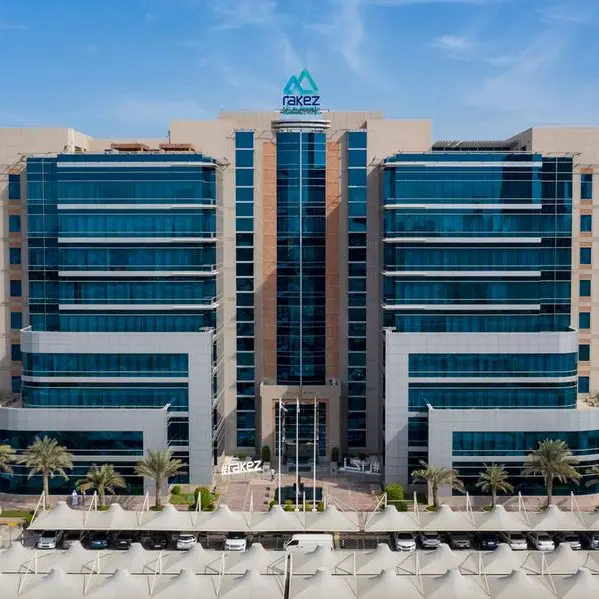The penetration rates of district cooling and stand-alone air or water chillers are 15 to 25 percent in GCC countries, compared to 2 percent in the rest of the world
Governments can play a critical role in the adoption of district cooling and can create a favorable market through the use of a six-part regulatory framework to increase adoption
Dubai, UAE – According to international forecasts, global demand for air-conditioning is projected to triple over the next 30 years, with most of this demand emanating from developing countries. Meeting this demand will be expensive, according to the “Cooling our World” study released by Strategy& Middle East, part of the PwC network. To keep costs under control, the study recommends deploying district cooling where appropriate in developing countries as this could lead to over US$1 trillion in energy savings worldwide through 2035.
Among the factors for this rise in demand are higher population growth, greater household disposable income, higher living standards and rapid urbanization. The growth of urban areas, in particular, leads to “heat islands” that are much warmer than surrounding rural areas because appliances and machinery generate heat when used and increase the local temperature. Although international forecasts anticipate that improvements in the energy efficiency of traditional cooling technologies can prevent unsustainable electricity demand, the volume of additional demand may simply be too great, which is why developing countries should consider district cooling.
According to the Strategy& Middle East report, district cooling is an efficient means of providing cooling in appropriate areas. District cooling aggregates demand and uses the most energy efficient technology to cool high-density developments, whilst using less energy than even the most efficient stand-alone systems.
Speaking about the benefits of district cooling, George Sarraf, Partner and Managing Director of Strategy& Middle East, said: “Gulf Cooperation Council (GCC) countries have been early adopters of district cooling, and can be the benchmark for other countries. We estimate that worldwide, increased adoption of district cooling could reduce energy consumption by up to 5,000 terawatt-hours over the next 16 years, representing $1 trillion in cost savings by 2035, assuming that energy prices are $0.20 per kilowatt-hour. This is a significant reduction and builds the case for using district cooling because it is energy efficient method and cost effective.”
District cooling systems consume 20 to 30 percent less power than the most efficient conventional cooling solution, and 60 to 80 percent less power than the average conventional cooling system. Additionally, district cooling can reduce peak power capacity by up to 30 percent on average (with an additional 20 percent reduction that can be unlocked through thermal energy storage).
“A key advantage of district cooling comes from aggregating demand, ideally among multiple buildings that combine residential and commercial spaces. The result is a higher cooling density — a measure of the maximum amount of energy required to cool a specific area, directly related to the population density and the type of occupied space in the area to be cooled. As cooling density grows, the unit cost of district cooling decreases, while the cost of conventional technologies remains relatively flat,” saidChristopher Decker, Senior Executive Advisor, Strategy& Middle East.
Interestingly, the penetration rates of both district cooling and stand-alone air or water chillers are higher in GCC countries than in the rest of the world, representing 15 percent to 25 percent of the total installed cooling capacity in the region. This high adoption rate stems from two factors: recent real estate development, and the need to minimize the cooling load during the hot summer days, when cooling load could represent up to 70 percent of peak electricity demand in some countries. Furthermore, Strategy& Middle East forecasts of urban plans show that district cooling is feasible in about 40 percent of new-build communities. The percentage is even higher for the mega-developments in GCC countries, which are ideal candidates for district cooling.
Strategy& Middle East outlines the environmental and real estate benefits of district cooling, which include:
Reduced emissions; Less energy consumption because district cooling is efficient, consequently reducing CO2 emissions from existing fossil-fuel-burning power plants.
Increased real estate values; By removing the air-cooled chillers that occupy large areas on building rooftops, district cooling frees up space for sale or lease.
Improved user experience; The availability and reliability of cooling improves, leading to a better experience for users, because district cooling systems are monitored more closely.
Alignment with other technologies; Using district cooling can help with the introduction of other technologies. District cooling requires large, up-front investments, centralized management, and considerable regulation, largely the same as what is required for the adoption of other sustainability and efficiency measures, such as solar power or geothermal cooling.
Building a regulatory framework for District Cooling
“Governments play a critical role in the adoption of district cooling, because it requires significant planning to aggregate demand, protect customers, and ensure that the economic benefits are equally distributed along the value chain. Governments need to develop a holistic regulatory framework, similar to those for electricity and water utilities, as this will address the commercial, legal and technical aspects of district cooling”, said Dr. Raed Kombargi, Partner, Strategy& Middle East.
“The six part regulatory framework is vital because the necessary aggregation of demand, protection of customers, securing of the significant capital required, management of financial and demand risks, and surmounting of other challenges will not happen through an unregulated market,” he added.
Based on the experience of GCC countries, Strategy& Middle East has developed a six-part regulatory framework, will all six elements to be implemented simultaneously:
1. Mandate the use of district cooling where appropriate: Make district cooling mandatory in areas or developments that meet predefined criteria. Developers opt for conventional cooling systems, or build district cooling systems that are underutilized, if they perceive insufficient demand. For this reason, governments should mandate district cooling where it is appropriate. Regulators should work closely with urban planners and identify promising areas based on an analysis of master plans and respective cooling load densities.
2. License operators, providers, and retailers: The regulator should license operators, providers, and retailers to ensure they have sufficient capabilities and know-how to operate in the sector. Licensing would allow regulators to control the number and quality of service providers, and take other necessary steps to ensure that customers enjoy high-quality service and effective competition and pricing.
3. Set technical and service standards: Regulators should introduce technical standards and specifications, design codes, and minimum performance indicators. Technical standards would cover topics such as planning, system design, distribution, metering, and operations. Service standards would establish baselines for the availability of cooling services to customers.
4. Develop contractual frameworks: There should be a process tostandardize contract elements and streamline communication among the parties. The development of a contractual framework will protect customers’ rights and reduce legal expenditures for providers, and mitigate the number of complaints and disputes in the market.
5. Establish competitive tendering process: Introduce regulations to ensure competitive bidding and fair competition during the tendering of district cooling systems. This is necessary to eliminate monopolistic or oligopolistic behaviors and ensure a baseline of healthy competition in the market. The benefits include increased transparency, lower barriers to entry for new companies, more competitive prices, and higher-quality service to customers.
6. Regulate prices: Stabilize the market and protect consumer rights through regulations for price control, revenue recovery, and payment allocation. Price control would ensure healthy competition and fair pricing for district cooling services in the market; revenue recovery would ensure that prices paid by customers reflect the true underlying cost of the service; and payment allocation would ensure that charges are equitably distributed among paying entities.
“As developing countries worldwide face growing demand for comfort cooling, merely improving the energy efficiency of the existing solution will probably not suffice. Developing countries need to increase the adoption of district cooling at a national level. To ensure that this occurs to the maximum possible extent, these countries should emulate GCC countries by drafting and implementing district cooling policies,” concluded Jad Moussalli, Principal with Strategy& Middle East.
About Strategy&
Strategy& is a global strategy consulting business uniquely positioned to help deliver your best future: one that is built on differentiation from the inside out and tailored exactly to you. As part of PwC, every day we’re building the winning systems that are at the heart of growth. We combine our powerful foresight with this tangible know-how, technology, and scale to help you create a better, more transformative strategy from day one.
As the only at-scale strategy business that’s part of a global professional services network, we embed our strategy capabilities with frontline teams across PwC to show you where you need to go, the choices you’ll need to make to get there, and how to get it right.
The result is an authentic strategy process powerful enough to capture possibility, while pragmatic enough to ensure effective delivery. It’s the strategy that gets an organization through the changes of today and drives results that redefine tomorrow. It’s the strategy that turns vision into reality. It’s strategy, made real. Find out more by visiting us at strategyand.pwc.com/me.
© Press Release 2019Disclaimer: The contents of this press release was provided from an external third party provider. This website is not responsible for, and does not control, such external content. This content is provided on an “as is” and “as available” basis and has not been edited in any way. Neither this website nor our affiliates guarantee the accuracy of or endorse the views or opinions expressed in this press release.
The press release is provided for informational purposes only. The content does not provide tax, legal or investment advice or opinion regarding the suitability, value or profitability of any particular security, portfolio or investment strategy. Neither this website nor our affiliates shall be liable for any errors or inaccuracies in the content, or for any actions taken by you in reliance thereon. You expressly agree that your use of the information within this article is at your sole risk.
To the fullest extent permitted by applicable law, this website, its parent company, its subsidiaries, its affiliates and the respective shareholders, directors, officers, employees, agents, advertisers, content providers and licensors will not be liable (jointly or severally) to you for any direct, indirect, consequential, special, incidental, punitive or exemplary damages, including without limitation, lost profits, lost savings and lost revenues, whether in negligence, tort, contract or any other theory of liability, even if the parties have been advised of the possibility or could have foreseen any such damages.










